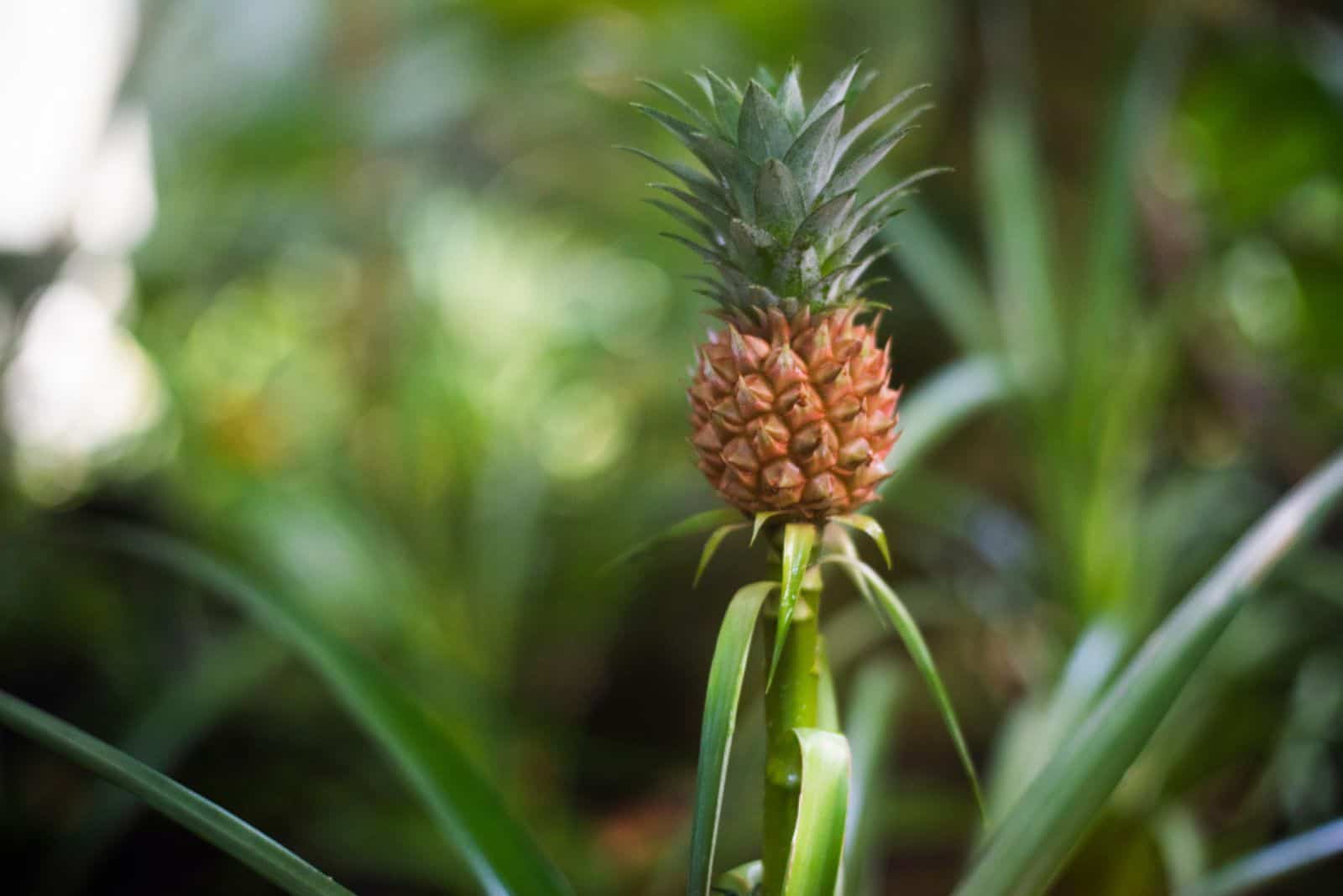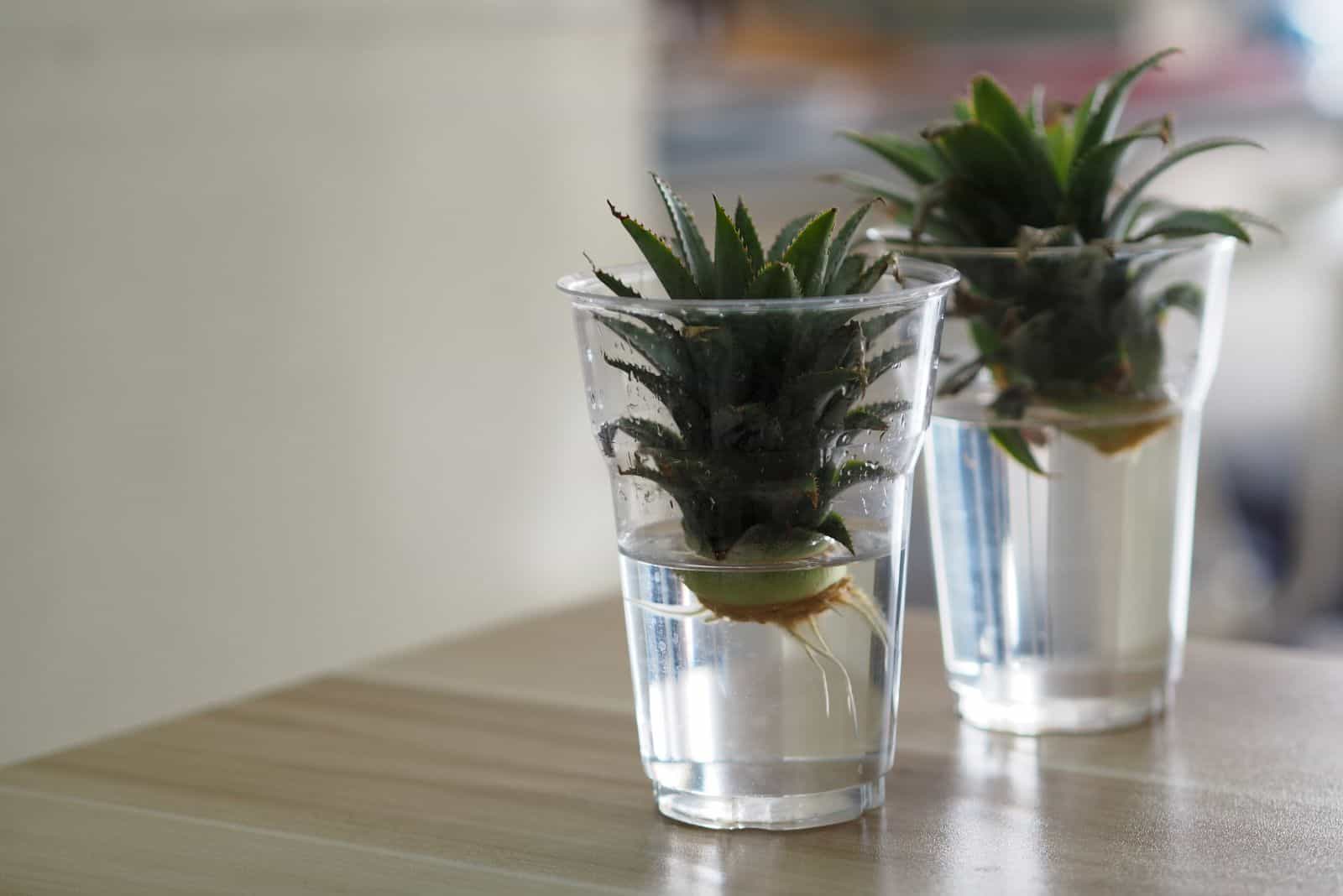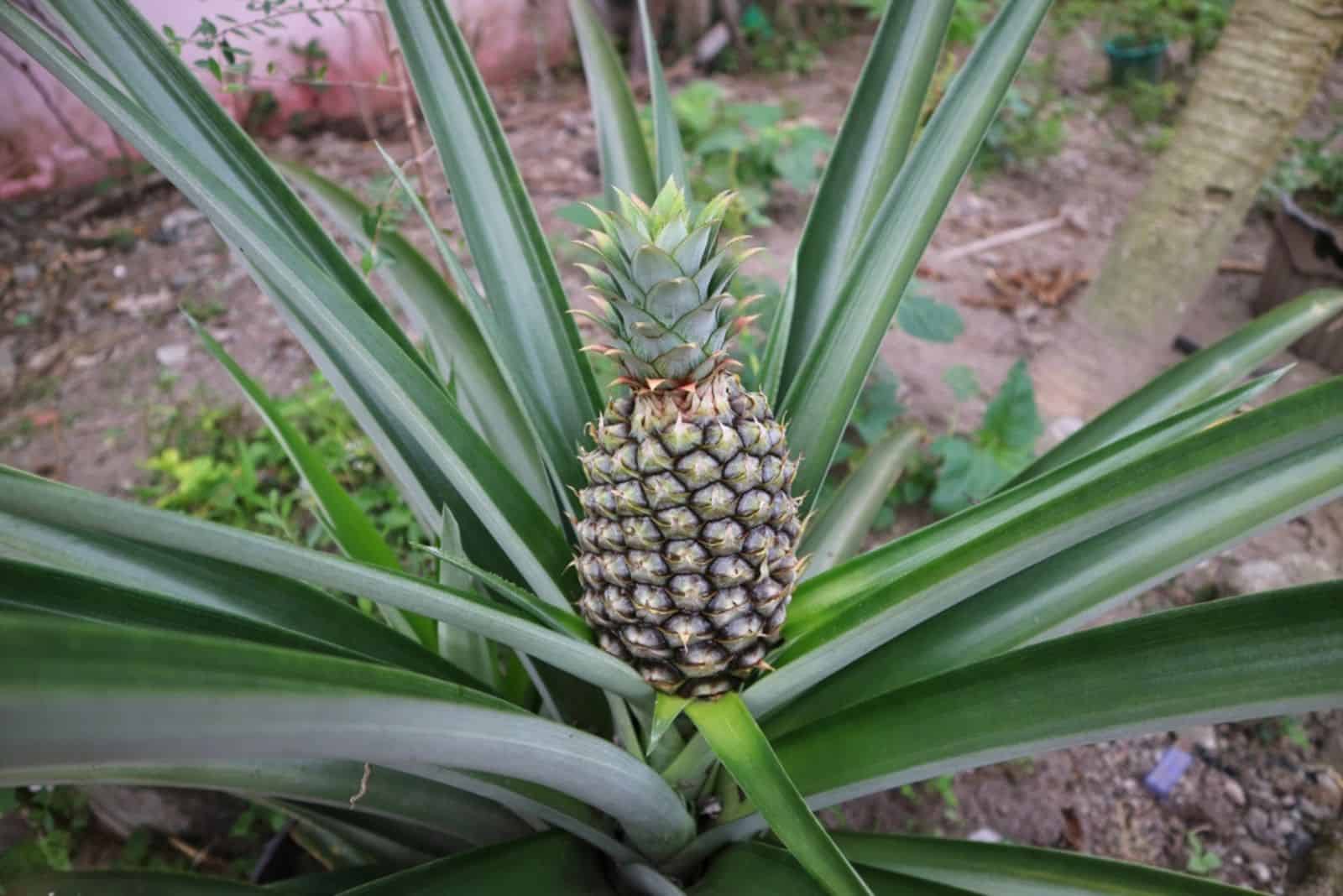If you are planning to grow your own pineapples, then you must get familiar with the pineapple growing stages first. In gardening, it’s always important to know how plants look throughout each growing stage and meet their needs accordingly.
Pineapple (Ananas cosmosus) is a tropical fruit that grows in USDA hardiness zones 11 and 12. When dealing with any type of tropical plant, they’re generally quite sensitive and require special treatment.
This is why most gardeners start preparing the land four months before planting their pineapples!
Today, we are going to discuss the pineapple’s lifecycle and also share some useful tips on how to grow them successfully.
Let’s get started!
1. Vegetative Phase
The vegetative phase begins with planting. Growth and development of the roots and foliage also occur and last from planting until the flowering stage.
Planting
Pineapple’s are propagated utilizing crowns or offsets. Crowns are produced by the fruit, while the offsets are produced by a mature plant. When you buy a pineapple, you can save the leafy part and use it to grow your own pineapples!
You can cut half an inch below the leaves and remove some of the bottom ones. Cut the top of the pineapple’s outer layer until you detect root buds at the base of the crown or stem. They ought to resemble little brown lumps along the stem’s edge.
Now you can either put it in the water or in moist, well-draining soil. Most folks have more luck when they put the crown in the soil. Sand-based soil mixture with perlite is ideal for root growth.
If you decide to put it in the soil, you should bury the pineapple top up to the base of the leaves. Water it thoroughly, put it in a location with bright indirect light, and keep the soil moist.
You should also keep an eye on pests such as mealybugs, scales, and pineapple red mites because these critters commonly infest seed material [1].
For more information, check out this video:
Root Development
Once you plant the crown, it will take about 6-8 weeks for the roots to develop. Pineapples have shallow roots that won’t develop if they are affected by disease or pests [2].
All roots begin right beyond the plant or planting material’s growth point. They expand outward and downward through a thin tissue layer known as the cortex. Pineapples have three types of roots: the main roots, lateral roots, and axillary roots.
The white basal tissue of the leaves and axillary roots play a crucial function in absorbing water and nutrients, which trickle down the leaves. Root hairs on axillary, main, and lateral roots considerably expand the amount of root material that can absorb moisture and nutrients. The availability of oxygen to the roots is necessary for the development of root hairs.
Foliage Growth
Root growth lasts until just before the foliage grows. During this phase, it is important that the baby plant receives sunlight all day and that the temperatures are somewhere between 65 and 85 degrees Fahrenheit. You can also add a diluted fertilizer to encourage leaf growth.
Pineapple leaves are organized in a spiral around the stump. They are long, trough-shaped, taper from base to tip, and almost horizontal.
Maximum sunlight absorption is made possible by this plant shape, and rainwater is collected and sent to the stem and roots of the plant with exceptional efficiency. The majority of the leaves, particularly those at the top of the plant that are exposed to the light, are angled toward the Sun, which reduces moisture loss and leaf temperature.
2. Fruiting Phase
It can take about 6 to 8 months for the plant to finish its vegetative growth stage and enter the fruiting phase. The fruiting phase begins with flowering and lasts until the delicious fruit appears!
During this phase, the young plant requires warm temperatures, lots of sunlight (at least 6 hours a day), and watering when the soil dries out. After planting, the need for fertilizer increases quickly and reaches its peak two to four months before floral initiation [3].
Flowering
Pineapples are slow-growing plants, so it can take about 2 years for them to start flowering. During this time, you will be able to spot the stem growing longer and wider, eventually giving rise to a head of tiny purple or scarlet flowers with a red, yellowish, or green rosette.
The stalk keeps expanding until it develops the crown, or top, which is a dense cluster of short, stiff leaves. Two or three heads could come off the plant, and some plants will occasionally produce up to 12 heads!
The primary flower is a cluster of 100 to 200 blossoms, each with a three-part ovary, six fleshy stamens, and three fleshy sepals and petals. Separate blossoms combine together to form the meaty, cone-shaped fruit.
A pineapple is an indeterminate flowering plant, so it doesn’t have a particular flowering trigger like, for example, the length of the day or night. Still, there are some ways to encourage flowering.
For instance, you can put your pineapple with an apple in a plastic bag for a couple of days. The apple releases ethylene, which is a gas that acts as a ripening hormone for fruit and vegetables [4]. However, you will still have to wait two to three months for the flowers to appear.
If you want to find out more about how to induce pineapple flowering, check out this video:
Fruiting
Pineapples are referred to as a sorosis, which is defined as “a fusing of numerous fruits together to form one unit.” Each “eye” (fruitlet) is a whole fruit [2].
Flowering begins from the base of the sorosis and progresses upward in a spiral pattern to the last eye. The developing point goes back into a vegetative state and forms the top (crown) after the production of fruitlets stops.
With proper cultural care, a large number of fruitlets will grow into a well-shaped, high-yielding fruit as a result of a successful induction. Once the fruit turns yellow/orange, it is a sign that the pineapple is ripe and ready for harvest!
3. Sucker Development Phase
Mature pineapple plants can only flower and produce fruit once. Luckily, the plant can produce numerous offsets or suckers that will then develop into a new fruit-bearing plant. These offsets emerge from the stem around the base of the fruit.
They grow at ground level, while basal suckers appear from stolons in the ground. When you’ve finished harvesting the pineapple and the main plant is showing signs of deterioration, keep the offsets on the plant.
You can cut these offsets and grow them separately by following the instructions described above!
Harvesting
It is important to wait until pineapples are fully ripe before harvesting. This is because they don’t continue to ripen after harvest. As pineapple lacks starch reserves, unlike citrus, strawberries, and stone fruit, it cannot get “sweeter” after harvest like pears, stone fruit, rockmelons, and bananas [2].
While color can be used as an indicator of ripeness, it is not the most reliable option. A yellow or orange pineapple is usually ready for harvesting, but you can check the sugar content as well. Wait until the pineapple is emitting a delicious aroma around its base if you’re growing one at home.
When picking or purchasing a pineapple from the store, the scent is an excellent method to tell if it is ripe.
It is relatively easy to harvest pineapple. Simply use a sterile and sharp knife to cut it, just be careful not to damage those delicious fruits!
Read also: The 9 Watermelon Growing Stages: A Complete Guide
Wrapping Up
Now that you know what the pineapple growing stages are, you are ready to grow your own!
Next time you go to the store, pick a sweet pineapple and save the crown. I would recommend you start with the soil first. This is how I managed to grow mine, while my brother put the crown in the water and it just rotted away.
Remember that you will have to provide the perfect growing conditions because this plant is delicate. Trust me, it will be all worth it once you get to eat your own pineapples!
That’s all, folks. I hope this article was helpful.
Until next time!
References:
1. Kenneth G. & Marshall W. (2003). The pineapple botany, uses, and production. ResearchGate
2. Pineapple best practice manual. Queensland Department of Agriculture and Fisheries.
3. Hossain, M. F. (2016). World pineapple production: An overview. African Journal of Food, Agriculture, Nutrition and Development,
4. Smith, G. (2017). Ethylene-silent, but deadly. ProduceNews



